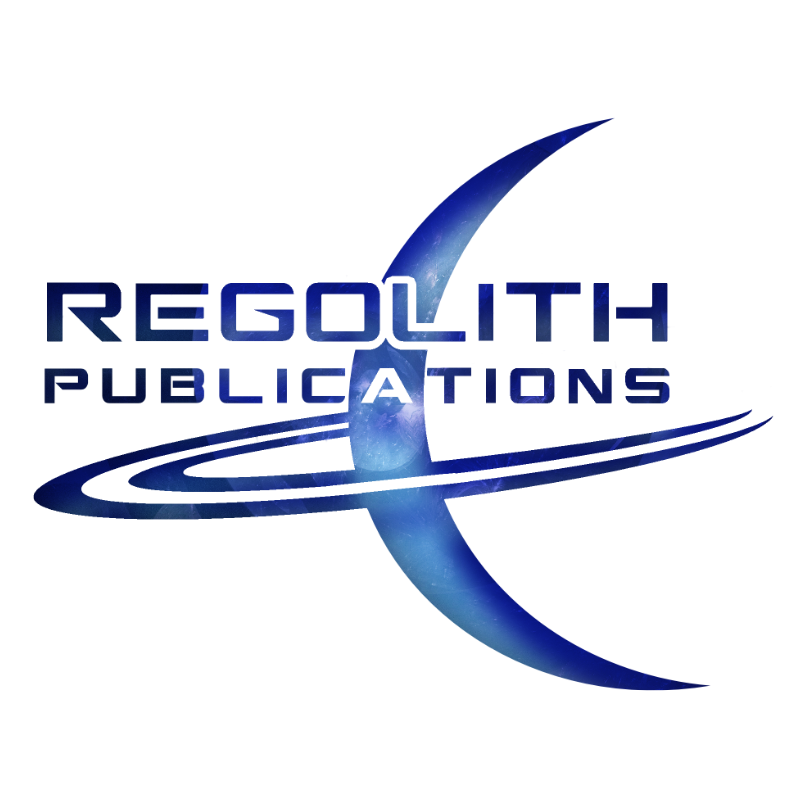|
I get asked this question often about my writing and publishing career. "How'd you get into it? Where do you even start as far as looking at getting published?" I got asked this exact same question again today. And a few days ago also. So I'm going to give anyone else interested in my own experiences with writing and publishing a crash course in what I learned. But I learned it on my own, mainly by trial and error, so just know that I don't have the perfect strategy to publishing. Just that I've been doing it for a solid five years now and have gathered enough useful facts to share with you all. The Thing About Publishing Is...Unless you have a literary agent, or know an agent indirectly, or have someone on the inside of the publishing world, really, your best bet is self-publishing. It's the way to go if you're serious about telling stories. But if you want to try for the big time and send endless submissions and inquiries to publishers and agents, be my guest. Just know that it could take months, even years, to hear a single reply. And usually it's in the form of a rejection letter. That said, even if you had an excellent agent, they might tell you, self-publishing is the way to go. You see, in this digital age publishing has changed and eBooks, a once laughed at niche which publishers considered a gimmick for tech companies is now a major part of the publishing and book selling market. But you don't need to take my word for it. Hit sci-fi author and mega-success story Hugh Howey talks about the growing dominance of the eBook market and why self-publishing has not only helped the book market expand, but it's actually strengthened it. You can read about it HERE on his blog The Wayfinder. About 90% of your revenue will come from e-book sales. At least, it has for me. Mostly from Amazon.com. But also sites like Apple iBooks, Kobo, Smashwords, and Nook Press / Barnes & Noble. Mostly Amazon though. Now, I'm what is considered a hybrid author. I've been lucky enough to have been published by a genuine publisher (Winlock Press, an imprint of Permuted Press) as well as maintaining a regular library of self-published works (under my own creator-owned imprint Regolith Publications). But it has taken me a while to get here. Although my books have been on shelves for about five years now, I've been working at it for nearly a decade. Just know that writing and making books takes time. It's not a sprint. It's a marathon. And it consists of one part art, one part technical savvy, and a whole lot of passion. You'll find out quickly enough if you have the passion for it or not. But if you do, more power to you! I feel I should inform you about some of behind the scenes details about the whole publishing thing. A typical publishing contract pays you 30% in royalties and takes the rights to your book. I have to admit, it's not the greatest deal. But that's the standard contract that usually gets sent to you. If you have an awesome agent, you maybe could get 35% to 45% in royalties. Usually less if you take an advance. But nobody really doles out advances anymore except for the BIG FIVE, and they only offer such advances if they think your book makes for a lucrative property. Chances are though, it's not. And they won't. Self-publishing allows you to take in a larger cut of the pie, so to speak. Usually you get to keep around 70% royalties and you retain full rights to your characters and stories. That's a big deal for many reasons. Most of all because you're making double the revenue, have full artistic control, and you can expand your properties into ongoing series if they do well. Under a traditional publishing deal. Once you sell your property, however, it's gone. For good. This makes self-publishing extremely attractive to those creative types, like myself, who just want to tell good, entertaining stories. Meanwhile, after my previous publisher failed to advertise or promote my books at all, and they cancelled the remaining series due to stagnating sales, I regained the rights and went back to making money off self-publishing. If I would have left my property with my former publisher, my books would have been shelved. And with no advertising and no longer being put on store shelves, my name and property would have receded into obscurity. So be very careful before ever signing a publishing contract. I learned the hard way how difficult it is to regain your property from a publishing company that wants to sell you the promise of being the next best-selling author but end up tanking your series. It's always the writer who gets burned. Never the publisher. And this is why self-publishing has exploded in terms of popularity. Publishers and vanity presses can no longer take advantage of unwitting authors. If I were to take away anything from my publishing adventures, it's that I'm never signing a publishing contract again without first finding myself a trustworthy, hard-working agent. I suggest you take my advice and do the same. Learn from my mistakes so you don't have to suffer falling victim to those who'd prey on your publishing ignorance and take advantage of you. Self-Publishing and Print on Demand (POD)Now, let's chat about some of the how-to aspect of publishing. Self-publishing is mainly Publish on Demand (POD). POD publishing is sweet because you don't pay anything up front. No publishing fees. No print fees. When someone orders your book online, then the printer prints one copy and that comes out of the percentage of royalties that the POD service takes out of your sales -- which is why you make 70% and not 100% -- printing costs are taken out. I use the CreateSpace service for publishing my physical books. It's an Amazon company. But they are a printer too. And it's the easiest set-up I've seen. They also have tutorials to help you get started. And everything is step by step. It's great for beginners, but also very reliable for seasoned pros. https://www.createspace.com/ The downside to CreateSpace is that they only print soft-bound, paperback books. If you wanted a hardcover edition, or a spiral bound cookbook, or something fancier like a slipcase, then you might want to use LuLu.com's service. https://www.lulu.com/ LuLu also lets you make some promotional materials, which is nice. But if you really wanted to print promotional materials I'd suggest using a printing service like VistaPrints or Overnight Prints. Both are online printers which will print on nearly anything from book marks to t-shirts, mugs, calendars, posters, signs, bags, pens, notepads, mouse pads, business cards, post cards, and on and on it goes. Now, let's discuss the e-book services. Both Create Space and LuLu let you publish your digital e-books for FREE. They even give you free ISBN numbers. This saves a lot of money, but you are limited to their select templates. And if you use their ISBN number, you can only sell your books on their website. And even though LuLu offers a better quality of printed book, Amazon has the widest reach of any book publisher, even beating out the traditional Big Five, which is why so many Indy authors and micro-presses choose to use CreateSpace and KDP. What's KDP? Glad you asked. The thing is, no matter what service you use to create your actual book, you're going to have to become familiar with KDP -- Kindle Direct Publishing. I say this because when you make your e-book, this is going to be your main service since it is the Kindle platform that sells the most books. (Don't worry, CreateSpace and KDP are linked together, but you'll need to set up an account for both). https://kdp.amazon.com/ If you want to level up your printing skills, and you want to perhaps do more with your books than what either LuLu or CreateSpace can offer you, then you'll need to familiarize yourself with INGRAM and Lightning Source. They offer the most professional print services, since they are the print services all the professional publishers use. They offer a full range of options for POD books as well. But you have to have your files made precisely according to their specifications. It's a bit more technical than the others, so I only recommend going this route for advances users or those who have enough money to pay someone to format their books for them. Oh, and you'll need to supply your own ISBN numbers for publishing through Lightning Source. You can supply your own ISBN number for any service, but they aren't exactly cheap. Especially if you plan on publishing more than five books a year. That said, if you want fancy hard covers with slipcases, embossed print, or high-quality paper you may decide to level up and shell out some $$ for some personal ISBN numbers. You can buy them from Bowker. The ISBN sales page can be found HERE. A pack of ten ISBN numbers goes for $250 (USD). A pack of 100 goes for $575. So you can see why a FREE ISBN number from CreateSpace or LuLu is so attractive to authors. The Three Most Important Aspects to a Book...Now, that's just picking a service. Unless you intend to learn everything yourself, you'll need to HIRE talented people to help you put the book together. The three most important aspects to a book are: COVER, EDITING, and FORMATING. As such, the most important services a first time author will need to rely on are COVER ARTIST, EDITOR, and BOOK FORMATTER. Now, cover prices range depending on the talent of the artist and what you're going for. But a high end cover like my BITTEN zombie book cover costs about $500 to $600. I have a series of cover artists I work with. The guy who did BITTEN works at StreetlightGraphics.com They're the company I highly recommend because they can do cover design and formatting and offer reasonably priced packages. Actually, they're the cheapest I've found for professional work. They also can handle logo design as well as make maps and legends and 3D art for your book. http://www.streetlightgraphics.com/ Another excellent cover design artist, whom I've used, is Christian Bentulan. He is fast and quality. In fact, he has the fastest turn around of any cover artists I've seen and always pumps out beautiful covers. I highly recommend him if you need a book cover ASAP. You can find his work at: http://www.coversbychristian.com/ Now, here's the thing that needs to be said. Before you do any of this you MUST finish your book first! The reason is simple. The second step in all of these is always handing in or uploading your finished book file. If you don't have your book completed, getting beyond step 2 in a 10 step process will be fairly difficutl. That, I hope, is obvious. But be sure you're not just typing your manuscript and then uploading or submitting your book. That would be terrible. You want to be professional, always, and here's why. One angry reviewer on Amazon will give you a one-star review, and that's fine if you have two-hundred rave reviews. But if your new, and they ding you for quality, seeing a one-star review will be devastating to your book sales as well as readability. Oh, and people really do judge books by their covers. So, you better have a really gorgeous, professional looking cover. Let me stress this point. Hire an editor. Hire a cover designer. Get the formatting right. If you miss any of these aspects, your book will be ripped to shreds by unhappy reader-customers, and they won't hold their punches. And that literally will make or break you as a self-published writer. And then, if you crash and burn, you'll either have to go back to submitting inquiries to traditional publishers or create a pen name and start all over again. So get it right the first time around. That's key. Coincidentally, editing is the most expensive part of book making. For a 300 page book it costs anywhere from $1200 to $1400. That's on top of the $600 for a decent cover and another $200 to $400 for book formatting. On average, to publish 1 book yourself will cost around $2,000 to $2,400. It ain't cheap. Oh, and you won't be getting that money back any time soon. It took my first novel, BITTEN, three long years to get back the money it cost to produce and publish. But here's the thing. You do it because you believe in it. You have a passion for it. And when you go broke publishing your first novel, but are busily budgeting out how you're going to pay for the second one, then you'll know you're doing it for the love of writing and telling stories. And then, the rest is just math. Digital Platform and Promotion...The first step is to get the book written.
The second step is to get the book made and publish it. For more on publishing digitally, check down this step-by-step breakdown the folks over at Reedsy did: HERE. The third step is promotion... and when it comes to any kind of promotion, whether it's self promotion or paid, having a website is vital. Here's a good article over at Entrepreneur.com on the tricks of self-promotion when you're an Indie author. That's the third step. Set up a website. You'll use it to brand yourself, or your pen name, and it will also act as your springboard for any future promotion you'll do for your books and writing. There are numerous free blogging/website platforms you can use. From Google's BLOGGER to Wordpress to FourSquare and others. I use WEEBLY because it's easy and fast and is a website with a blog feature. You can see what I mean by visiting my website: www.tristanvick.com Once you have your official author website up, you can link all your social media to it. Whether it is Facebook, Twitter, Tumblr, Instagram, or any other number of social media services, your website will be your main hub where everyone links back to. On your website you should have an easy to read layout of your books with links to where people can purchase them. You should also create a newsletter to start interacting with a fan-base. Most people use MailChimp, as it's easy and free. Weebly has a built in service as well, but it's limited without buying and upgrading their pro package. Finally, try not to abuse your social media and digital platforms. What I mean by this is that it's not a place to advertise your material 24/7. People don't want to view the same old commercial again and again. They like engagement. People respond to content. This means you'll likely need to start a blog where you talk about writing or write movie reviews, or what have you. The idea is to generate interest in you as a person. But try to focus on stuff related to the medium of writing and publishing and storytelling. If you go off on religious or political rants, it may turn off a large portion of potential readers. The idea is to drive people to your books, not drive them away. Generating content is the best way to do this, but make it entertaining and/or informational. Stick to what people like to read about. Anything else can be regulated to a secondary blog or separate website. The point is, if you want to be thought of as a professional writer, then you have to keep a certain air of professionalism. But that should be obvious. Once you have your website set up, the rest is just grunt work. But don't let your blogging interfere with your writing schedule. I only blog once or twice a month. The rest of the time I focus on my writing and producing quality books. Although, I've been known to waste far too much time on Facebook, but, heck, nobody is perfect. **** This concludes my insights into self-publishing. I hope they help you get the jump-start you need on your own writing career. If you have any specific questions about writing or publishing, feel free to leave a comment below or email me. Thanks for listening. --Tristan Vick PAX!
0 Comments
I'd like to thank Christian Bentulan for taking my concept and improving it.
This cover is beautiful! You can check out Christian's cover designs at: Covers By Christian.com. A friend suggested that Starfleet in STNG was a dystopia set within a utopia. I've given that a lot of thought, not only because it poses interesting philosophical and political questions, but because the geek in me couldn't resist.
I actually must disagree. I think that the dystopia would have to be the default position for this to hold true. I don't see Starfleet as a dystopia within the United Federation of Planets, being the utopia. I think what Starfleet is, technically, is a militarized science division that often comes into conflict with its own principles because of its interaction with lesser evolved civilizations, which force it to have to adapt to scenarios which a self-sustaining utopia does not have to encounter. Or think of it like this. Starfleet acts like an event horizon which safeguards the utopia. If you can make it past the checks and balances of Starfleet's rigid entrance policies, then you can get subsumed by the utopia. If not, you get bounced out, much like Hawking radiation getting ejected from a black hole. But I do not take this to mean Starfleet itself is a dystopia, because things would have to be generally unpleasant and bad. And although Starfleet is definitely totalitarian, it isn't always generally a bad place. I think what we need to consider is that our current understanding of utopian and dystopian societies are limited, in part, by the tropes which play out in fiction. But if given serious thought, we find perhaps our versions of them have been stereotyped to bad Hollywood representations. I think both utopias and dystopias, if they were to truly exist, would be much more complex systems than typically depicted. I replied by stating it seems that The United Federation of Planets is a utopia in constant flux as it tries to retains itself amongst non-utopian worlds. This is, in part, directly due to the efforts of Starfleet to expand the Federation to other worlds. If they were left to their own, the utopia may stabilize. But there would be no advancement of knowledge or growth, since Starfleet would no longer serve a purpose. The things with dystopias is that they tend to have totalitarian regimes which take over the utopia. Hence, become dystopias. As far as I can tell Starfleet has not attempted to overthrow the Federation, and exists democratically alongside it. The Federation still has its own democratically elected President, who like the Commander in Chief, also presides over a cabinet of Admiral who govern Starfleet. It seems this gives them more of a Socialized Democratic feel where there are systems in check which prevent Starfleet from taking over entirely. Except, you know, when that becomes the plot line -- such as in the recent Into Darkness film which was exactly about that sort of thing. Shout out to my friend, Joshua Ray Derke, for raising the interesting topic. I was hesitant at first to create an omnibus this early in the series. There are 3 more books scheduled, but I felt because I could offer it at a more affordable price then it would be worth it to readers who might take a chance on all 3 books, since the cost would be better than buying them individually. At the same time, it reads really tightly as this series is extremely interconnected. I thought it would be nice to have all three novels in one tight package so you could get the full effect of how well they blend into one another. Please enjoy the excerpt from BITTEN 1 below! And be sure to check out BITTEN 3 and the BITTEN Omnibus edition collecting the first three novels! ~BITTEN EXCERPT~Excerpt from BITTEN 1 (By Tristan Vick) ### Scrambling to get their clothes back on, Jesse screeched, “What the hell, man?!” as he tucked himself back into his pants. Likewise, Hurley had already tucked her girls back into her shirt and gave her skirt a tug as she pulled it back into place. Although the moment was spoiled, it seemed the guard was more concerned with securing the door than anything they might have been doing. Sweat patches grew around the guard’s chest and armpits, as if he’d just run the Boston marathon, and saturated his standard-issue blue uniform. His bald, brown, head glistened with moisture under the florescent lights of the copy room, and his closely trimmed black goatee gave him that prim and proper look expected in a security guard. In a panic, he yelled at them, “Get back!” Suddenly he tugged the copy machine away from the wall and wedged it up against the door he had just come through. “Totally not cool, dude,” Jesse said as he hastily fastened his belt. “Did it ever occur to you to, you know, maybe knock first?” Before any further complaints could be made, something slammed into the door with such a horrific force that Jennifer thought the door would tear off from its hinges. Jennifer screamed, then, composing herself, asked, “What the hell was that?” Out of breath, the guard huffed, “We gotta get the hell out of here.” Before he could explain any further, there was another loud thud. The door buckled, but it held—just barely. Somebody wanted into the room badly. Whoever it was, they were certainly intent on breaking the damn door down. Jennifer stared at the fat security guard with a probing look. “What’s going on here?” “I’m being chased,” the guard answered. Thud! With the third impact the door latch gave out, and the door tore open. The copier rattled back as it absorbed the brunt of the impact. Throwing the whole of his body weight against the unlatched door, the security guard slammed it back shut. “You two have to get out of here…now!” “What are you talking about?” Zanato replied, not giving two figs about the oddity of the situation they found themselves in. “We were here first. Why don’t you just take your crazy-ass shit somewhere else?” Jennifer grabbed Jesse’s arm and, with an agitated look, stated, “Leave him be. I don’t want to get caught up in his mess. Let’s just get out of here. We’ll take the rear exit.” “Fine by me,” Zanato affirmed. But before they could turn to leave, the door came crashing in and the security guard crashed to the floor. The guard drew his gun out and aimed it at the open entrance. His arms shook with equal parts adrenaline and fear, which made holding the gun steady a more difficult task than it should be. He was trained, but not for this. Not this. Suddenly three pallid bodies pushed their way into the room. Their eyes were all fogged over with a murky white glaze. Even the pupils had faded to gray. Patches of their skin had turned jaundice yellow and were peeling off in layers. They looked more like corpses than the living. Jennifer gasped, “My God! Their faces! They’re all torn to shreds, as if—” “GraHhrrr!” growled a man in a cheap navy blue suit and wearing a generic red necktie. Chunks of bloody meat dangled from his excoriated chin. It looked like some kind of wild animal had mauled him. “Holy shit balls!” cried Jesse Zanato, as he backed toward the rear door. “They’re mother fucking zombies!” “Don’t say that!” Hurley snapped. “We don’t know what the hell they are.” Without any further hesitation, the guard took careful aim and fired off several shots into the man’s chest. But even having taken two bullets at point-blank range, the white-eyed man kept scratching and clawing at the guard. Zanato and Jennifer watched in horror as the others crouched down and joined in on the frenzy. The man’s snapping teeth latched onto the guard’s ear and tore it off. The guard howled out in pain. Covering his bloodied ear with his free hand, he put his gun to the head of the mad man and pulled the trigger. With a loud bang, bloody chunks of gray matter blew out to top of the man’s skull and splattered against the wall. Jennifer and Jesse watched in terror-filled awe as the man’s body fell to the side, giving ample room for the others to bend down and rip into the security guard’s torso. Ripping off his shirt, their cracked fingernails clawed at his skin. Tearing into his flesh, their hands pushed inside his gut, and the guard yowled as his ribs cracked like dry branches. Even as he was still wide-eyed and conscious, they began ripping out his organs. The guard let out one last blood-curdling scream as they pried him open like a walnut and disemboweled him, then his head fell limp and the awful screaming stopped. “Jesus Christ!” Hurley exclaimed, barely able to breathe, as she watched the monsters reach inside him and pulled out what looked like a chain of raw blood sausages, then they bit into the guard’s intestines. Taking her arm, Zanato peeled her away from the scene. “See, I told you they’re zombies. Now, come on! We have to get the fuck outta here!” Hand in hand, they dashed out the back door and tore down the hall and made their way to the elevator. Jamming the elevator button repeatedly, Jennifer chanted, “Come on! Come on! Come on!” But the elevator was indifferent to her button mashing. Finally, the chime dinged and the doors opened. Looking in, Zanato and Hurley saw Ramirez’s secretary lying on the floor, her chest split open like a melon, and a bloodstained UPS man hunched over her, eating her thigh meat. Sluggishly, the white-eyed delivery man looked up at them, and Jennifer Hurley covered her mouth and gasped. “The stairs!” Zanato cried out, tugging on Hurley’s arm. “Follow me!” Jesse Zanato took Hurley’s hand and they ran into the stairwell. “Do you know where you’re going?” Hurley asked. “Away from here,” Zanato said, his voice filled with fear. Bitten 3 : Kingdom of the Living Dead brings together the characters of Bitten Resurrection and Bitten 2 Land of the Rising Dead for one frightening zombie filled epic.
Rachael Ramirez is in search of the origins of the Resurrection Virus and her journey takes her to far away Japan, where she meets a precarious young Japanese girl, Saeko Sakaguchi, with similar abilities as her. Together the two women look for answers to who, or what, is behind the contagion. But before they can investigate the matter to any satisfaction, the head of the Yakuza, Ijin Gen aka "Gen the Barbarian", decides to slaughter half of the population of the last human settlement, Aokigahara village, in a show of power. Taking things personally, Saeko swears vengeance, and Rachael decides to guide the young woman and teach her how to unlock the true potential of the mysterious powers given to them by the Resurrection Virus. The only question is, will two super-powered women be enough to take down the entire Yakuza all the while having to fend of a never-ending onslaught of zombies amid the densest and biggest city on the planet? At the same time, on the other side of the world, Alyssa Briggs and the Cowboy, Gordon Longstaff, and their trustworthy companion Frank, the Pembroke corgi, run into a familiar face. But none of them seem to be too happy about it. Taken prisoner, they are given a simple ultimatum -- either ally themselves with the Blood Queen or be made her play things. The only question is, can they survive her mad, zombie infested, dinner party? Bitten 3: Kingdom of the Living Dead is the battle filled collision of BITTEN 1 and BITTEN 2 characters and the third installment in the Resurrection Virus Saga. It's a character driven, survival-horror, story for adults. The squeamish need not apply. 67,000 words. BUY NOW! |
Tristan VickBy day I am an educator and a cultural ambassador. By night I entertain notions of being a literary master. In reality I am just a family man and ordinary guy who works hard and loves writing just about as much as I love my family. Just about. AVAILABLE NOWNEWSLETTER
|









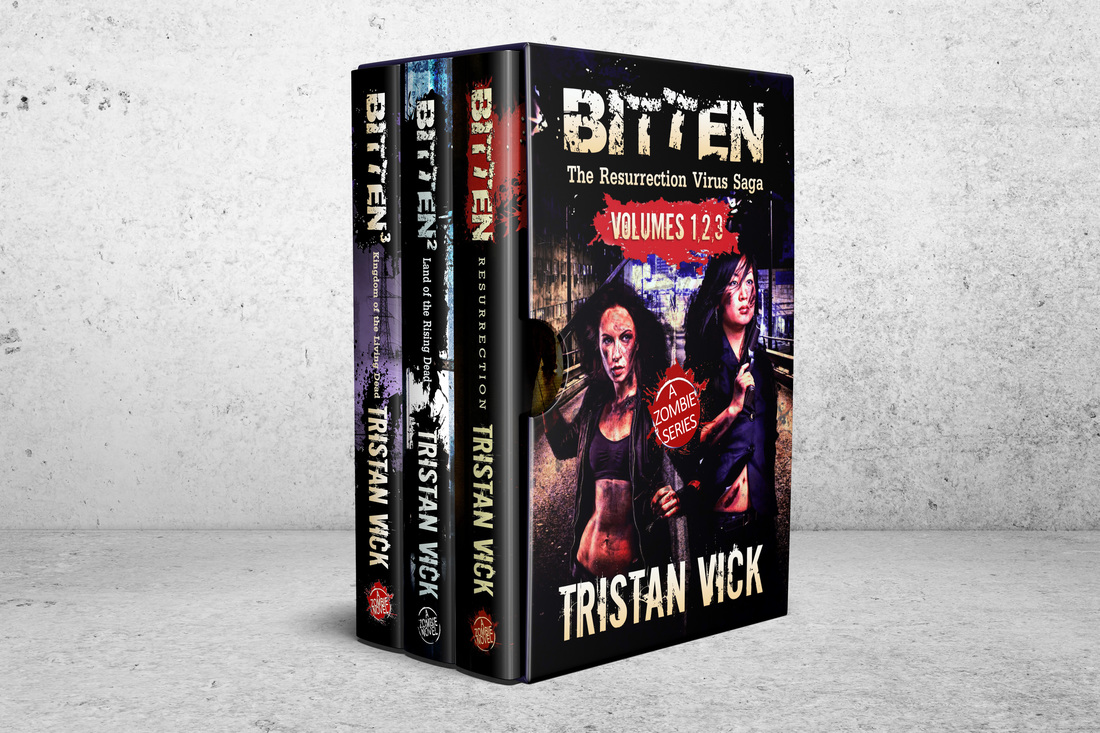
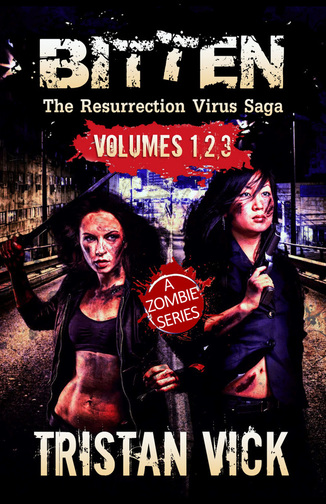



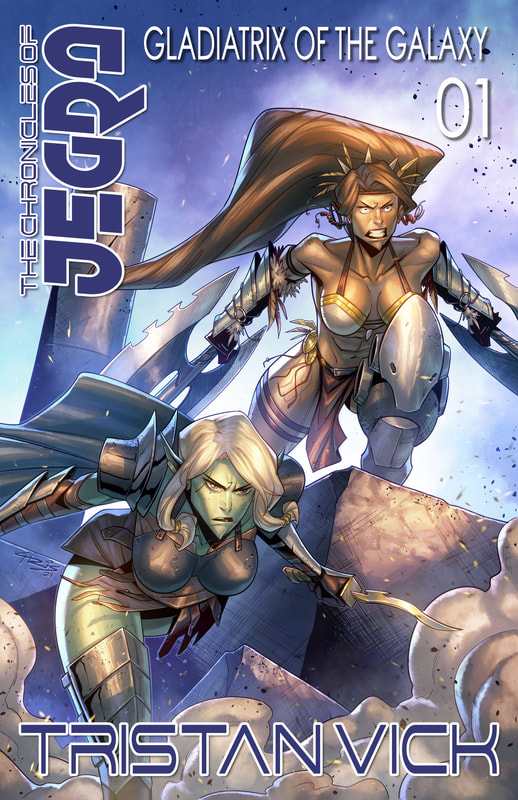
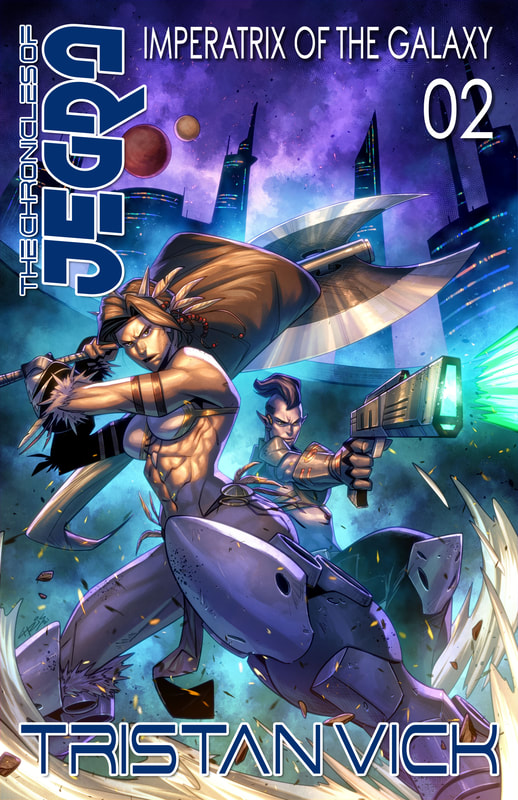

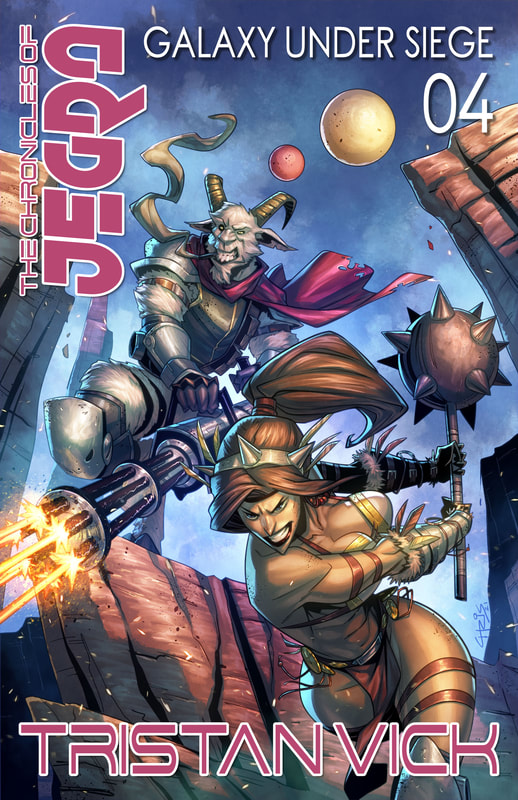

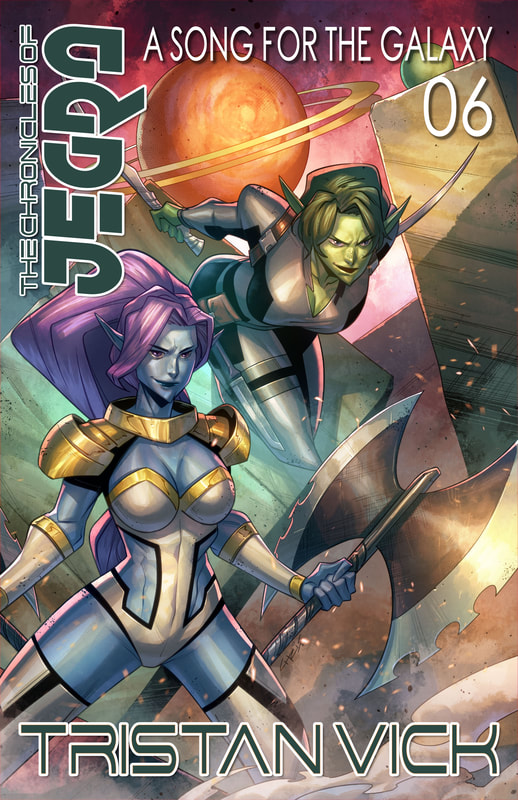
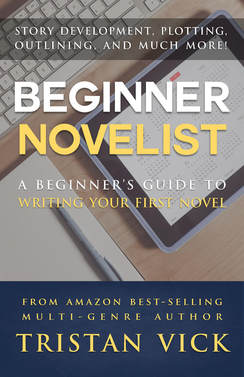
 RSS Feed
RSS Feed
